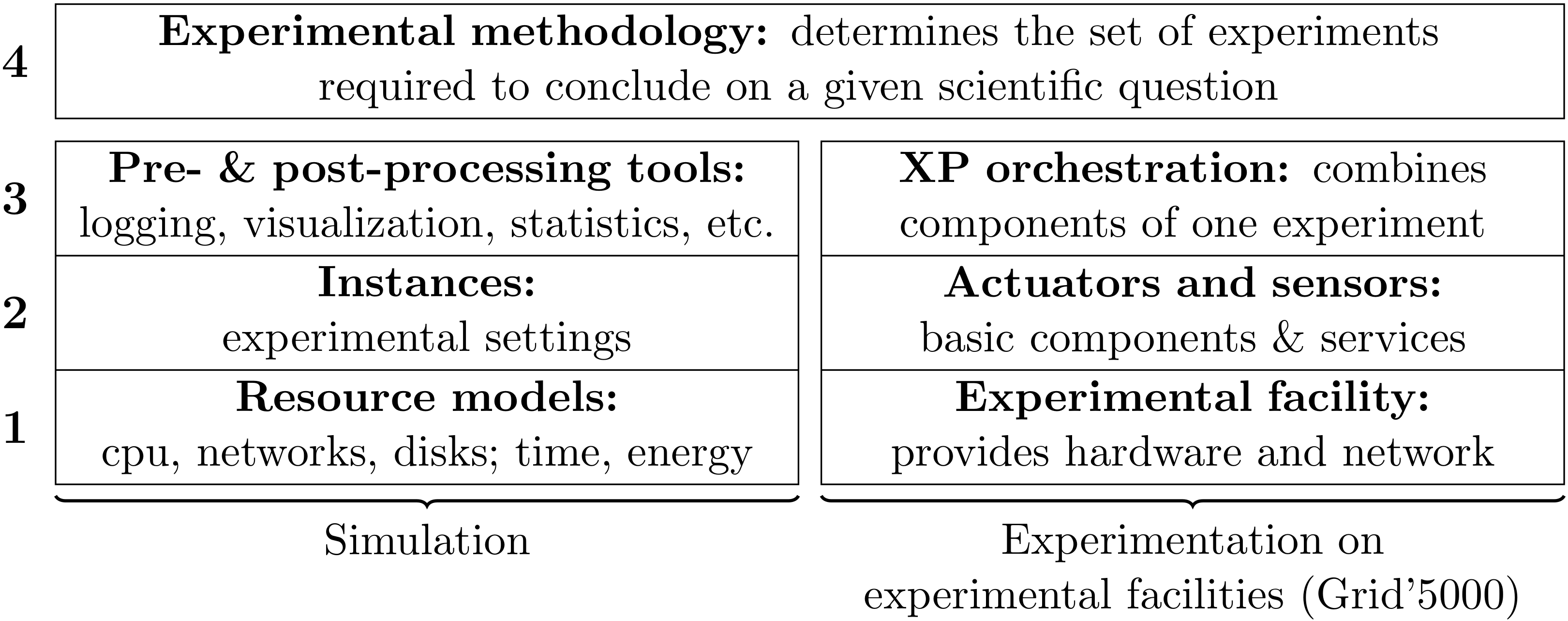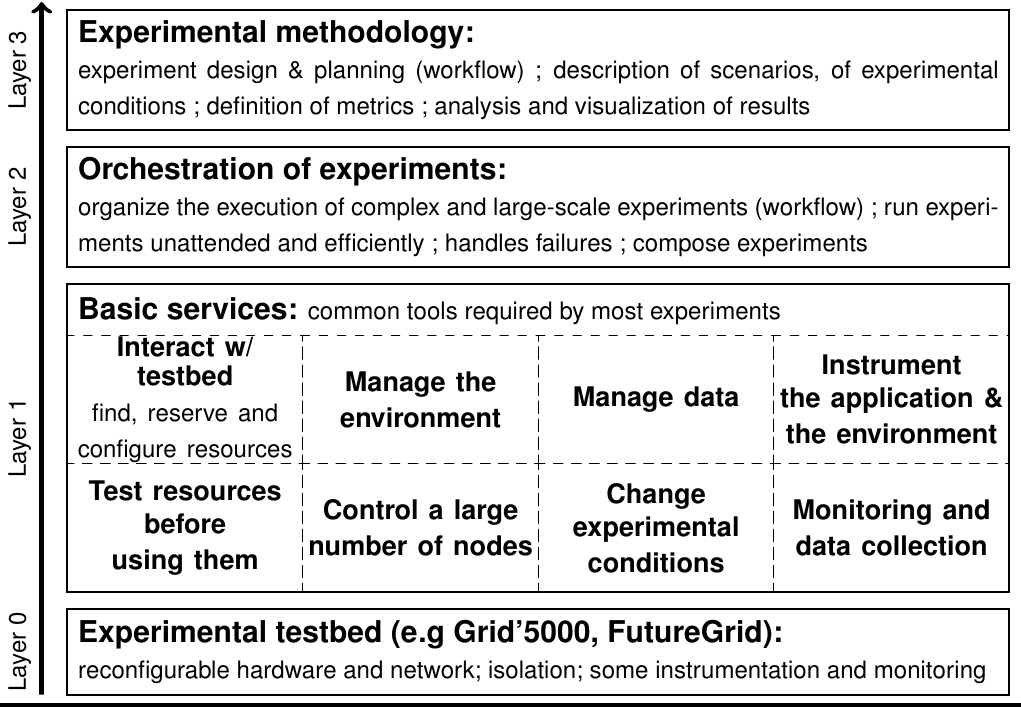Section: Scientific Foundations
Experimental methodologies for the evaluation of distributed systems
We strive at designing a comprehensive set of solutions for experimentation on distributed systems by working on several methodologies (simulation, direct execution on experimental facilities, emulation) and by leveraging the convergence opportunities between methodologies (shared interfaces, validation combining several methodologies).
|
Simulation and dynamic verification
Our team plays a key role in the SimGrid project, a mature simulation toolkit widely used in the distributed computing community. Since more than ten years, we work on the validity, scalability and robustness of our tool. Recent, we increased its audience to target the P2P research community in addition to the one on grid scheduling. It now allows precise simulations of millions of nodes using a single computer.
In the future, we aim at extending further the applicability to Clouds and Exascale systems. Therefore, we work toward disk and memory models in addition to the already existing network and CPU models. The tool's scalability and efficiency also constitutes a permanent concern to us. Interfaces constitute another important work axis, with the addition of specific APIs on top of our simulation kernel. They provide the “syntactic sugar” needed to express algorithms of these communities. For example, virtual machines are handled explicitly in the interface provided for Cloud studies. Similarly, we pursue our work on an implementation of the MPI standard allowing to study real applications using that interface. This work may also be extended in the future to other interfaces such as OpenMP or the ones developed in our team to structure applications, in particular ORWL. In the near future, we also consider using our toolbox to give online performance predictions to the runtimes. It would allow these systems to improve their adaptability to the changing performance conditions experienced on the platform.
We recently integrated a model checking kernel in our tool to enable formal correctness studies in addition to the practical performance studies enabled by simulation. Being able to study these two fundamental aspects of distributed applications within the same tool constitutes a major advantage for our users. In the future, we will enforce this capacity for the study of correctness and performance such that we hope to tackle their usage on real applications.
Experimentation using direct execution on testbeds and production facilities.
Our work in this research axis is meant to bring major contributions to the industrialization of experimentation on parallel and distributed systems. It is structured through multiple layers that range from the design of a testbed supporting high-quality experimentation, to the study of how stringent experimental methodology could be applied to our field, see Figure 3 ,
During the last years, we have played a key role in the design and development of Grid'5000 by leading the design and technical developments, and by managing several engineers working on the platform. We pursue our involvement in the design of the testbed with a focus on ensuring that the testbed provides all the features needed for high-quality experimentation. We also collaborate with other testbeds sharing similar goals in order to exchange ideas and views. We now work on basic services supporting experimentation such as resources verification, management of experimental environments, control of nodes, management of data, etc. Appropriate collaborations will ensure that existing solutions are adopted to the platform and improved as much as possible.
One key service for experimentation is the ability to alter experimental conditions using emulation. We work on the Distem emulator, focusing on its validation and on adding features such as the ability to emulate faults, varying availability, churn, load injection, ...and investigate if altering memory and disk performance is possible. Other goals are to scale the tool up to 20000 virtual nodes and to improve its usability and documentation.
We work on orchestration of experiments in order to combine all the basic services mentioned previously in an efficient and scalable manner. Our approach is based on the reuse of lessons learned in the field of Business Process Management (BPM), with the design of a workflow-based experiment control engine. This is part of an ongoing collaboration with EPI SCORE (Inria Nancy Grand Est), which has already yield promising preliminary results [15] , [28] .
|
Exploring new scientific objects.
We aim at addressing different kinds of distributed systems (HPC, Cloud, P2P, Grid) using the same experimental approaches. Thus a key requirement for our success is to build sufficient knowledge on target distributed systems to discover and understand the final research questions that our solutions should target. In the framework of ANR SONGS (2012-2016), we are working closely with experts from HPC, Cloud, P2P and Grid. We are also collaborating with the production grids community, e.g. on using Grid'5000 to evaluate the gLite middleware, and with Cloud experts in the context of the OpenCloudWare project.




